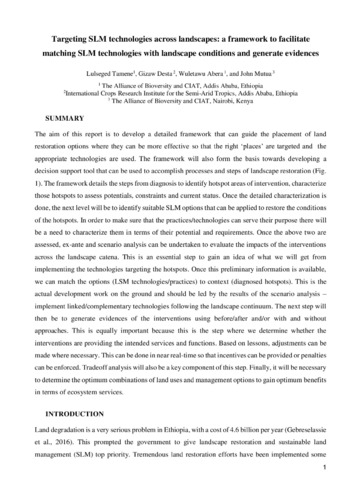Targeting SLM technologies across landscapes: a framework to facilitate matching SLM technologies with landscape conditions and generate evidences
The aim of this report is to develop a detailed framework that can guide the placement of land restoration options where they can be more effective so that the right ‘places’ are targeted and the appropriate technologies are used. The framework will also form the basis towards developing a decision support tool that can be used to accomplish processes and steps of landscape restoration (Fig. 1). The framework details the steps from diagnosis to identify hotspot areas of intervention, characterize those hotspots to assess potentials, constraints and current status. Once the detailed characterization is done, the next level will be to identify suitable SLM options that can be applied to restore the conditions of the hotspots. In order to make sure that the practices/technologies can serve their purpose there will be a need to characterize them in terms of their potential and requirements. Once the above two are assessed, ex-ante and scenario analysis can be undertaken to evaluate the impacts of the interventions across the landscape catena. This is an essential step to gain an idea of what we will get from implementing the technologies targeting the hotspots. Once this preliminary information is available, we can match the options (LSM technologies/practices) to context (diagnosed hotspots). This is the actual development work on the ground and should be led by the results of the scenario analysis – implement linked/complementary technologies following the landscape continuum. The next step will then be to generate evidences of the interventions using before/after and/or with and without approaches. This is equally important because this is the step where we determine whether the interventions are providing the intended services and functions. Based on lessons, adjustments can be made where necessary. This can be done in near real-time so that incentives can be provided or penalties can be enforced. Tradeoff analysis will also be a key component of this step. Finally, it will be necessary to determine the optimum combinations of land uses and management options to gain optimum benefits in terms of ecosystem services.

